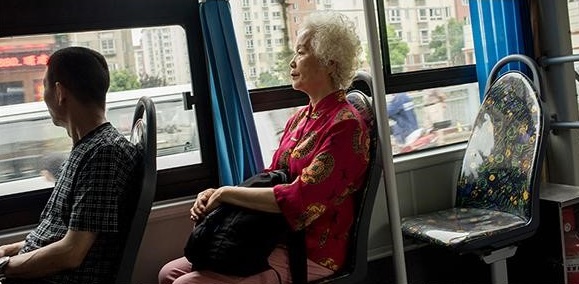For Those Caring for Someone with Wet AMD
As a caregiver for someone with wet age-related macular degeneration (wet AMD), your support is critical to helping your friend, spouse or family member cope with this chronic, progressive disease.
Here is a checklist you can use and adapt for medical appointments and daily tasks, and for working with your friend/spouse’s broader eye care team.
Medical Appointments
Accompanying the person you are caring for to medical appointments consistently is an important step. You can provide comfort and security, and ensure they understand treatment options and instructions for how to monitor their condition. Helping them remember and attend all treatment appointments is crucial for slowing the progression of wet AMD.
To do list: Create and update a calendar for eye doctor appointments. Each person reacts differently to treatment, and appointments may come at changing intervals. If a person sees several doctors for different conditions, make sure eye doctor appointments are included on any master calendars.
–Keep a list of questions to ask eye care professionals during visits, and write down the answers for easy reference after you leave the doctor’s office.
–Create a regular process for helping your friend or loved one monitor the progression of wet AMD between visits.

Transportation
For people with wet AMD, help with transportation is high on the priority list. As a caregiver, you can create a network of friends, family and social service organisations who can drive your friend or loved one, or accompany them on public transportation to destinations that include the eye doctor’s office, supermarket or lunch with friends and on activities that include walks or hikes.
To do list: Create a list of friends and family who are willing to help with transportation duties. Ask your doctor’s office to recommend local organisations that offer transportation support.
In the Home
The home can become an obstacle course for people with impaired vision. But there are some small changes you can make that will have a major impact on safety. Two simple suggestions: for better visibility, line the edges of stairs with brightly coloured tape and paint electrical outlets in a contrasting colour. The National Council for the Blind Ireland (NCBI) have a retail and online shop providing many aids that can help with daily living. You can view these items here; Daily Living – NCBI
To do list: Click here to read our article on tips for keeping the home safe.
Healthy Living
Encourage healthy eating and regular exercise. Setting and participating in health-related goals, such as taking walks together, can have a positive impact on day-to-day wellbeing.
To do list: Click here to read our article on healthy living with wet AMD.

Financial and Medical Paperwork
Caregivers are often asked to help patients keep their financial and medical documents up to date, including balancing budgets and filing medical forms.
To do list: Make a list of what needs to be done, including key payment dates for bills and taxes, and the creation and upkeep of file folders for medical records. Create a weekly or monthly plan for tackling the paperwork.
The Back-up Plan
Caregiving is demanding work, especially for those who are still raising their own families and/or who work full-time. You will need to take breaks and prepare for emergencies.
To do list: Create a network of people and organisations who can assist you with caregiving, including family, friends, paid health aides and volunteers from social service organisations.

- Take notes for future reference. It can be overwhelming to process everything a doctor is saying while you’re in the office, so it may be helpful to take notes on what the doctor says and review them with your loved one later. Consider using the drive home or a phone call the next day to review key points. These may include timing of the next appointment, what to expect from the treatment and side effects to be aware of. Most importantly, remember to ask your loved one how they felt about the appointment during this conversation.
- Remind your loved one that they are not alone, but recognise their independence. Let them know you recognise that appointments can be stressful and that you’re there for them during and after the appointment, but be sure to remember that they are an independent adult and may want to do some things alone. You want to make them feel supported, but not like they are incapable.
- Make sure their concerns are heard. If a loved one seems hesitant to ask the doctor a question or uncomfortable with part of the treatment, speak up. A major part of a caregiver’s role at the doctor’s appointment is to be their advocate. Wet AMD treatment may be new to them, so let the doctor know if you think your loved one needs more information or reassurance. They will be the one most affected by treatment, so their opinions should be taken into account.
Helping the person you are caring for keep track of appointments and accompanying them to medical appointments consistently can be extremely helpful and comforting for them.

